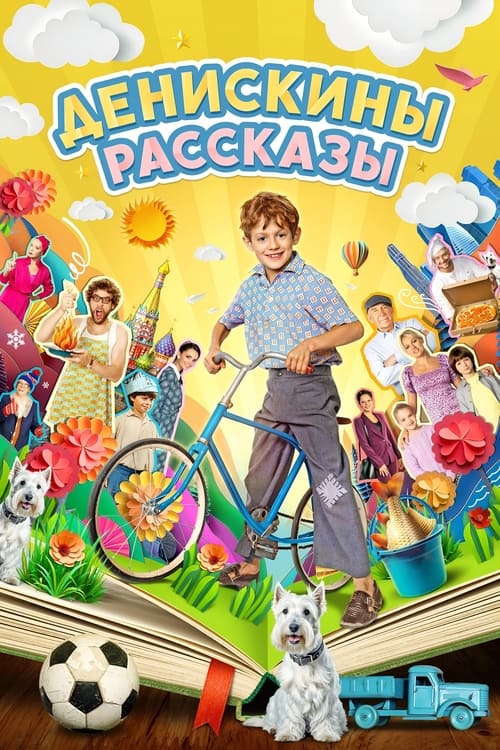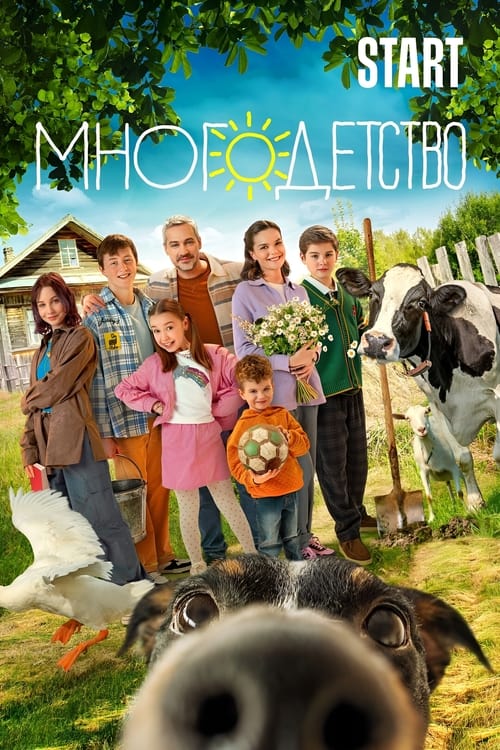
Ask Your Own Question
What is the plot?
In the first episode of "Here I Come," we are introduced to the protagonist, Mia, a high school senior with dreams of becoming a professional dancer. The episode opens with Mia practicing in her bedroom, her movements filled with passion and determination. She receives a text from her best friend, Jenna, reminding her about the upcoming audition for a prestigious dance academy. Mia's excitement is palpable, but she also feels the pressure of her father's expectations, who wants her to pursue a more stable career.
The next scene shifts to the school cafeteria, where Mia and Jenna discuss their plans for the audition. Mia expresses her doubts about her abilities, revealing her fear of failure. Jenna encourages her, insisting that Mia has the talent to succeed. As they talk, we see glimpses of Mia's strained relationship with her father, who disapproves of her dance aspirations. This tension is highlighted when Mia's father unexpectedly arrives at the school, and their conversation turns into a heated argument about her future.
Later that evening, Mia practices her routine in front of a mirror, her emotions swirling between hope and anxiety. She recalls a moment from her childhood when she first fell in love with dance, which fuels her determination to prove herself. The scene transitions to the day of the audition, where Mia arrives at the academy, her heart racing with anticipation. The atmosphere is electric, filled with other hopeful dancers, each showcasing their skills.
As the audition begins, Mia watches the other dancers perform, feeling both inspired and intimidated. When it's her turn, she steps onto the stage, her nerves threatening to overwhelm her. However, as the music starts, she loses herself in the rhythm, pouring her heart into the performance. The judges watch intently, and Mia's passion shines through, captivating the audience. After her routine, she receives a mix of applause and critical feedback, leaving her uncertain about her chances.
Following the audition, Mia and Jenna celebrate at a local diner, where Mia tries to shake off her doubts. However, she receives a call from the academy later that evening, informing her that she has been accepted. Overjoyed, Mia rushes to tell her father, but he remains unsupportive, insisting she should focus on academics instead. This moment deepens Mia's resolve to prove herself as a dancer, despite her father's disapproval.
As the season progresses, Mia faces various challenges, including rivalries with other dancers and the pressure of balancing her studies with her dance commitments. One significant plot point occurs when Mia's rival, Lila, sabotages her during a group performance, leading to a public confrontation. Mia confronts Lila backstage, and their argument escalates into a physical altercation, showcasing the intense emotions and competitive nature of their relationship.
In a pivotal moment, Mia discovers a hidden talent for choreography, which she begins to explore. This new passion allows her to express herself creatively and gain confidence. She collaborates with Jenna to create a dance piece for an upcoming showcase, which becomes a turning point for both characters. Their friendship deepens as they navigate the challenges of competition and self-doubt together.
As the season nears its climax, Mia faces a critical decision when she is offered a chance to perform in a prestigious dance competition. However, this opportunity conflicts with her father's plans for her future. Torn between her dreams and her father's expectations, Mia ultimately chooses to follow her heart, leading to a dramatic confrontation with her father. This moment is filled with raw emotion as Mia stands up for herself, asserting her identity as a dancer.
The season finale culminates in the dance competition, where Mia performs her original choreography. The performance is a blend of her struggles, triumphs, and personal growth, resonating deeply with the audience. As she dances, we see flashbacks of her journey, highlighting the obstacles she has overcome. The judges are visibly impressed, and Mia's performance earns her a standing ovation.
After the competition, Mia receives recognition not only for her talent but also for her resilience. The season ends on a hopeful note, with Mia finally gaining her father's support, who acknowledges her passion and hard work. The final scene shows Mia and Jenna celebrating their achievements, looking forward to the future with renewed determination and friendship.
What is the ending?
In the ending of "Here I Come," the main characters face their final challenges, leading to a resolution of their personal arcs. The protagonist, after overcoming significant obstacles, finds a sense of belonging and purpose. The relationships between the characters are tested but ultimately strengthened, leading to a hopeful conclusion.
As the final episode unfolds, we see the protagonist, Alex, standing at a crossroads. The sun sets behind him, casting a warm glow that symbolizes the end of one chapter and the beginning of another. He reflects on his journey, the struggles he faced, and the friendships he forged along the way.
Scene 1: The Gathering The scene opens in a community center where Alex has organized a gathering to celebrate the achievements of his friends. The room is filled with laughter and chatter, but there's an underlying tension as Alex prepares to announce his next steps. He feels a mix of excitement and anxiety, knowing that this moment will define his future.
Scene 2: The Announcement As Alex steps up to the microphone, he takes a deep breath. His friends, including Mia and Jordan, look on with anticipation. He shares his plans to pursue a new opportunity that will take him away from their hometown. The room falls silent, and he can see the shock on their faces. Mia, who has been his closest ally, feels a pang of sadness but also pride in his growth. Jordan, who has struggled with his own insecurities, feels a sense of loss but understands the importance of Alex's decision.
Scene 3: The Farewell After the announcement, the atmosphere shifts. Friends gather around Alex, offering hugs and words of encouragement. Mia, holding back tears, tells Alex how much he means to her and how he has inspired her to chase her own dreams. Jordan, with a newfound confidence, expresses his gratitude for Alex's support during tough times. The emotional weight of the moment is palpable as they all realize that this is not just a goodbye but a celebration of their journey together.
Scene 4: The Departure The next day, Alex prepares to leave. He packs his belongings into a car, and the sun rises, illuminating the path ahead. Mia and Jordan arrive to see him off. They share one last heartfelt conversation, reminiscing about their adventures and promising to stay connected. As Alex drives away, he glances in the rearview mirror, seeing his friends waving goodbye. A mix of hope and nostalgia fills his heart.
Scene 5: The New Beginning The final scene shifts to a new city where Alex arrives, filled with determination. He steps out of the car, taking in the unfamiliar surroundings. The camera pans out, showing him standing alone but ready to embrace the challenges ahead. The screen fades to black, leaving viewers with a sense of optimism for Alex's future and the enduring bonds of friendship that will carry on despite the distance.
In conclusion, the ending of "Here I Come" encapsulates the themes of growth, friendship, and the courage to pursue one's dreams. Each character, particularly Alex, Mia, and Jordan, experiences a transformative moment that solidifies their relationships and sets them on their respective paths, highlighting the importance of support and connection in navigating life's transitions.
Is there a post-credit scene?
In the show "Here I Come," season 1, there is indeed a post-credit scene that adds an intriguing layer to the narrative.
As the credits roll, the screen fades to black before transitioning to a dimly lit room filled with various photographs and newspaper clippings pinned to a corkboard. The camera slowly zooms in on a particular photo of the main character, Alex, smiling at a community event. The atmosphere is tense, underscored by a haunting melody that plays softly in the background.
Suddenly, the scene shifts to a shadowy figure standing in front of the corkboard, their face obscured. The figure reaches out and touches the photo of Alex, a smirk forming on their lips. They whisper, "This isn't over yet," hinting at unresolved conflicts and future challenges that Alex will face.
The camera lingers on the figure for a moment longer before cutting to black, leaving viewers with a sense of foreboding and anticipation for what lies ahead in the story. This scene effectively sets the stage for potential rivalries and deeper plot developments in the subsequent episodes, emphasizing themes of perseverance and the unknown.
What specific events lead to the climax of the season?
The climax of Season 1 is built upon a series of escalating events that culminate in a dramatic showcase. Key moments include Alex's preparation for the showcase, which is marred by self-doubt and external pressures, such as a critical review from a local art critic. Tensions rise when Alex's rival sabotages their performance, leading to a moment of crisis. However, in a pivotal scene, Alex finds the strength to reclaim their narrative, delivering a performance that not only impresses the audience but also serves as a cathartic release of their pent-up emotions.
What challenges does the main character face in their journey throughout Season 1?
In Season 1 of 'Here I Come', the main character, Alex, faces numerous challenges that test their resilience and determination. From navigating the complexities of family dynamics, particularly with a distant parent, to overcoming self-doubt in their pursuit of a dream career in the arts, Alex's journey is fraught with emotional turmoil. Each episode presents a new obstacle, such as dealing with a rival at school who undermines their confidence, or grappling with the fear of failure during a crucial audition.
How does the relationship between Alex and their best friend evolve throughout the season?
The relationship between Alex and their best friend, Jamie, undergoes significant evolution in Season 1. Initially, they share a close bond, supporting each other through personal struggles. However, as Alex becomes more focused on their ambitions, Jamie feels neglected and begins to question their friendship. This tension culminates in a pivotal scene where Jamie confronts Alex about their priorities, leading to a heartfelt reconciliation that deepens their connection and highlights the importance of communication.
What role does the mentor figure play in Alex's development during the season?
The mentor figure, Ms. Thompson, plays a crucial role in Alex's development throughout Season 1. As a seasoned artist, she recognizes Alex's potential and becomes a guiding force. Ms. Thompson challenges Alex to push beyond their comfort zone, encouraging them to take risks in their artistic expression. Her tough love approach often leads to moments of frustration for Alex, but ultimately, it fosters growth and self-discovery, culminating in a powerful scene where Alex performs a piece that embodies their journey.
How does the season explore the theme of identity through Alex's experiences?
Throughout Season 1, the theme of identity is intricately woven into Alex's experiences. As they navigate the pressures of societal expectations and personal aspirations, Alex grapples with their sense of self. Key plot points include moments of introspection, such as journaling and conversations with Ms. Thompson, where Alex reflects on their artistic identity. The season culminates in a transformative moment during the showcase, where Alex embraces their unique style, symbolizing a newfound confidence and acceptance of who they are.
Is this family friendly?
"Here I Come," season 1, produced in 2020, is generally considered family-friendly, but it does contain some scenes and themes that may be potentially objectionable or upsetting for children or sensitive viewers.
-
Emotional Conflict: The show features moments of intense emotional conflict among characters, including arguments and misunderstandings that may be distressing for younger viewers.
-
Family Struggles: There are depictions of family issues, such as financial difficulties and relationship strains, which could resonate with some viewers but may also be heavy for children.
-
Bullying: Some episodes touch on themes of bullying and peer pressure, showcasing characters dealing with exclusion or harsh treatment from others.
-
Loss and Grief: The narrative includes elements of loss, where characters confront the absence of loved ones, which could evoke sadness or discomfort.
-
Mild Language: There are instances of mild language that may not be suitable for all audiences, depending on parental discretion.
-
Dramatic Tension: Certain scenes build significant dramatic tension that might be overwhelming for younger viewers, particularly during climactic moments.
While the show aims to convey positive messages about family and resilience, these elements may require parental guidance for younger audiences.


























